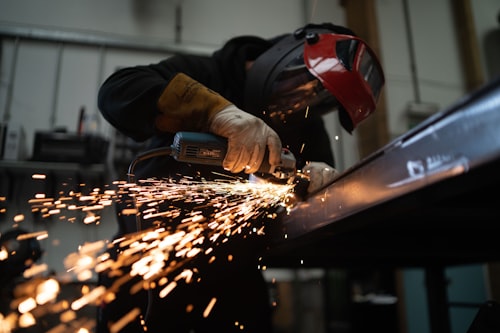The National Association of Manufacturers (NAM) reports that manufacturing supports an estimated 18.8 million jobs in the U.S., reflecting a robust contribution to the national economy. Additionally, around 65% of companies that had previously outsourced have now brought jobs back to the U.S., leading to the creation of approximately 122,000 new jobs in U.S. manufacturing in 2023 alone, according to Deloitte.
Despite these positive trends, the demand for goods has surged post-pandemic, revealing a critical labor shortage. Factories have been facing significant difficulties in finding skilled workers to fill vacancies, with nearly 63% of manufacturers struggling more than ever to recruit the right talent, up from 45% in previous years.
“US manufacturing is expected to have 2.1 million unfilled jobs by 2030”
according to a recent study by Deloitte and The Manufacturing Institute. The study also highlighted that there are currently 11.2 million job openings, but only 8.6 million individuals are actively seeking employment, exacerbating the gap in the manufacturing sector.
So, why are people not willing to work, especially in industries like manufacturing? What are the challenges to hiring and retaining talent?
Where has the workforce gone?
The workforce shortage is influenced by multiple factors. Many older workers have opted for early retirement, creating a significant gap in the workforce that is difficult to fill with younger employees. Additionally, younger generations often view manufacturing jobs as monotonous and undesirable, preferring careers that offer a better work-life balance.
This perception, combined with an aging workforce and early retirements, has resulted in a persistent labor shortage projected to last through 2030. Some workers are also hesitant to enter manufacturing due to perceived unfavorable working conditions in the sector.
Bringing the workforce back
There is an urgent need to bring the workforce back and bridge the manufacturing skills’ gap. In response to the growing challenge of attracting talent, manufacturers' advocates, such as NAM, emphasize the necessity of finding new ways to attract new employees.
“Manufacturers need more tools in their toolkit to fill these jobs and retain employees by offering different incentives and unique benefits”
- National Association of Manufacturers
To meet the increasing demand for goods and help the manufacturing industry recover, it is essential to understand what the workforce values. The perception of their careers has shifted, making workers more conscious of their rights and more focused on their health and financial stability.
Workers are now looking for long-term employment with comprehensive benefits. NAM recently introduced a flexible 401(k) plan that covers approximately 15,000 companies registered as NAM members, helping these companies offer competitive retirement benefits to improve employee retention.
To appeal to younger workers, manufacturers should consider providing flexible payroll options and comprehensive health plans. A survey indicates that 74% of Americans are more likely to work for companies that offer robust financial health support, highlighting the importance of introducing financial wellness solutions like on-demand pay.
While preparing for retirement is crucial, offering more than a 401(k) match is essential to retain talent. On-demand pay solutions, which allow employees to access their wages daily, provide a competitive edge by giving workers greater control over their finances and helping employers manage cash flow more effectively.
Addressing these workforce challenges with a coordinated, industry-wide strategy will be vital. Adapting to the changing needs of the modern manufacturing workforce by offering innovative benefits will be key to attracting and retaining talent.

